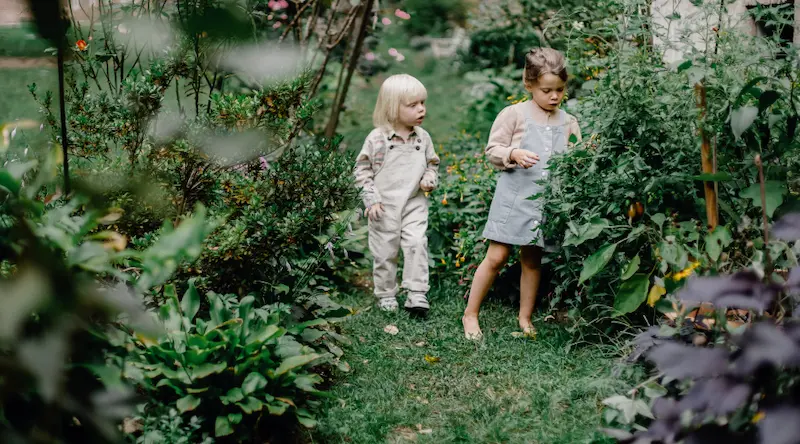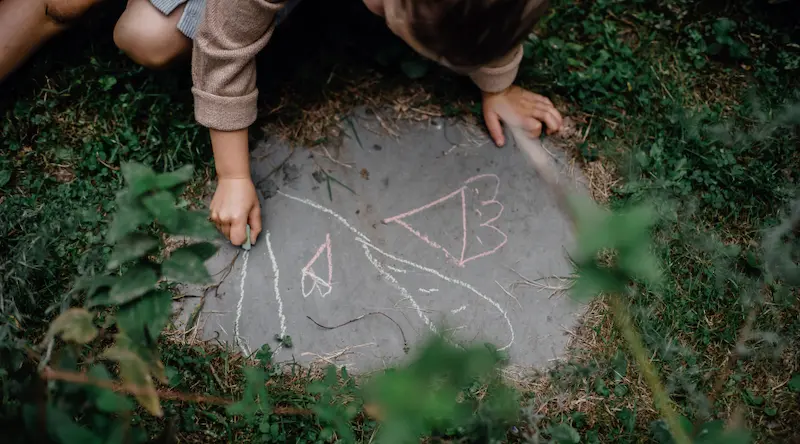settings
children
With Famly since
Have you ever heard parents joke after a birthday or a holiday that their child cared more about the box than the gift inside? That’s because, in the words of the author Antoinette Portis, “It’s not a box.” It’s a house, a cave, a boat — it's endless possibilities in a child's imagination.
And when it comes to activating children's imaginations, you won't find a better place than the mud pit.
Children seek out and absorb themselves in open-ended and intrinsically motivated play. The box, for example, creates an immersive play experience. It has depth, with layers and layers of possible journeys. In the same way, mud engages children's senses, imaginations and bodies in all the forms of open ended play it offers.
Three of the most versatile and accessible play tools with many physical and cognitive benefits are mud, dirt and water. These three tools are already common materials in early childhood education and are tools to dive into (literally).
Getting comfortable with mud, dirt and water stimulates everything from the immune system to the senses to brain development. Don’t believe me? By the end of this article, you’ll be ready to roll up your sleeves and make some mud pies!

Motor skills are made in the mud
For children to be ready for academic skills such as writing, it’s not just about putting a pencil in their hands as early as possible.
Instead, it’s about building a solid foundation so their minds and bodies are ready to use writing tools. That starts with motor skills and mark-making; two fundamentals children build naturally through muddy, messy play.
Let's explore the biggest reasons to use mud, dirt and water as play tools.
Playing in the mud is a fun way for children to reach these 4 developmental milestones:
- Improving the ability to draw shapes (using the mud as their easel).
- Sharing (collaborating with other children).
- Turn-taking (working together with others while playing in the mud).
- Understanding size concepts (a big mud pie!).
Mud increases brain activity and stimulates motor skill development.
- A child uses the smaller muscles in their hands, wrists, fingers, feet and toes by squishing, squeezing, scooping, mixing and pouring the mud.
- Their smaller muscles become stronger, getting them ready for writing. For children to be prepared for writing, it’s not about putting a pencil in their hands as early as possible. It’s about laying a solid foundation so that their mind and body are ready to use a pencil.
- Walking in the wet mud is excellent for connecting with nature, and stimulates gross motor skills with the way we have to move in the mud pit.
- Mud is slippery and forces children to use their whole body to balance and stay upright, developing this critical gross motor skill.
Muddy play activates our senses, and builds our immune system.
- Mud activates all our senses: the different textures of mud, dirt and water activate the senses and send exciting stimulus to the brain. Activating the senses then helps develop tactile skills.
- A bit of play in the mud exposes children to healthy bacteria — which, according to a recent Finnish study, can bring a big benefit to a child's immune system.
Stoking STEM skills in the mud pit
Digging or splashing in mud puddles isn’t just a fun sensory experience for young children. While they’re engaging all the senses, another layer of critical cognitive learning is also going on.
Imagine the simple play activity of a child making mud pies by mixing dirt and water. When you stop and observe their play, you’ll soon realize that this simple activity engages fundamental skills for scientific exploration, mathematical foundations, critical thought and imagination.
When children actively mix dirt and water, they are changing the physical properties of the dirt and water. They are doing chemistry, building problem solving skills and discovering the effects of combining these two materials. The clear water is no longer clear. The wet dirt has now taken on a different texture and no longer slips through the fingers in the same way dry dirt does. Children are able to observe the physical change of mixing the two and, if given enough time, can experience the effects of evaporation when those mud pies are left out in the sun.

Learning muddy mathematics
Children are experimenting with math concepts through those same mud pies when they add water to the dirt.
First, they begin to understand quantity, such as “a lot” or “a little.” Children quickly learn that too little water doesn’t create the muddy effect they are hoping for, and too much water doesn’t make mud pies that hold. It may seem like nothing to an adult, but that mixing task helps the child learn all about measuring quantities and relative ratios.
They are learning to understand the meaning of capacity by using different-sized containers to put the dirt and water in. They are building their curiosity and asking thought-provoking questions about why the tall thin container holds less than the short wide container.
Children develop hypotheses about what will happen when they try something new. They are immersed in their learning experience!
The big ideas

Building language learning through muddy play
On top of math and science, we should remember the language that comes with mixing dirt and water. Words like “mixing,” “squishing,” “pouring,” “more,” and “less .”For our little ones, vocabulary words such as “mud,” “dirt,” and “water” are great words to add to their learning.
It’s one thing to be told what these words mean and something else to feel these words between your fingers. Words that might not be taught directly between an educator and child or might not make sense out of context.
How to plan for playing in the mud
Creating an immersive play experience with dirt, water, and mud requires intentional planning. Mud play is messy for children and educators. Mud play can be done indoors or outdoors with sensory bins, trays, different measuring tools and just plain old dirt and water.
If you're looking for some mud play activities to get started, you might check out this list of 10 ideas to cook up in a messy mud kitchen.
Another common blocker might be feeling like you don't have the right outdoor space to support mud play. But you'd be surprised at all the hidden opportunities to set up more outdoor learning at your child care program.
5 rules for making the most of mud play
- Embrace the mess. It’s going to happen — but so is the learning! If you know that you will find yourself worrying about the mud indoors, keep the mud as part of outdoor play for now.
- Communicate to parents to ensure their children are dressed for mud play. It's essential that children are dressed appropriately so that they can truly immerse themselves in the play as much or as little as they want. Communicating that to parents will undoubtedly help.
- Share the benefits of mud play with parents and teachers. Share this article, and send resources! When parents and other educators understand the intent and importance of dirt, water and mud play, the more children benefit and the more support you will receive as an educator around messy play.
- Add materials that can be used with the dirt, water and/or mud. Start small. Only add a few materials, such as measuring cups, spoons, buckets, or other natural materials. As the children’s play becomes more intentional rather than explorative, you can add baking trays and items to make maybe a mud person (like a snowperson but with mud).
- Have fun! There truly is magic in play and when children are given the opportunity to immerse themselves in genuine, authentic play, learning happens beyond what you could have imagined.
Regardless of where you set up your play experience, when children play with dirt, water and mud, they are experiencing learning in its truest form. Lenore Skenazy has a great quote, “When adults step back, children step up.” We must let children experience their learning and have autonomy in exploring dirt, water and mud. How can we support learning? By observing, documenting and offering those vocabulary words through our observations. Our main task as educators is to introduce the play experience.
Carla Ward is an early childhood educator and the founder of Early Learning Foundations, a business dedicated to education and enhancing the work of Early Childhood Educators. She has worked in early education for more than 17 years. You can learn more about Early Learning Foundations on her website.
Get 1000s of free EY activities
Want over 7,000 activities? See them in a free 14-day trial. Filter to target learning areas, age groups and topics, and get inspired.
Get started






